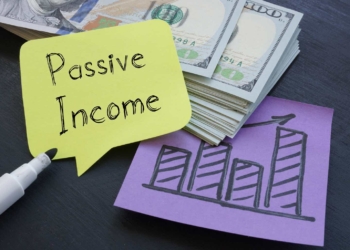Pgiam/iStock via Getty Images
The primary focus of this report is Applied Materials, Inc.(NASDAQ:AMAT)
Why read this report?
This is an analysis of how the prices of specific securities are likely to change in the next 3-4 months, based on the way major investment organizations (“institutional investors”) have perceived those prospects and made multi-million-dollar trade changes of holdings in their multi-billion-dollar portfolios. It is not a study of years-plus effects of economics, technology, politics, or competitive use of resources on earnings per share of securities. Such studies by others are embedded in their forecasts.
Instead, it is a comparison of present-day opportunities for capital gain among many industry related alternative choices for wealth accumulation as seen by investors with the capital and human resources sufficient to cause such price changes. It is based on how their prior internal organization forecasts, comparable to today’s, worked out in the securities markets in time horizons of subsequent shorter-term holding periods.
Description of Subject Investment Prospect
“Applied Materials, Inc. engages in the provision of manufacturing equipment, services, and software to the semiconductor, display, and related industries. It operates through three segments: Semiconductor Systems, Applied Global Services, and Display and Adjacent Markets. The company operates in the United States, China, Korea, Taiwan, Japan, Southeast Asia, and Europe. Applied Materials, Inc. was incorporated in 1967 and is headquartered in Santa Clara, California.”
Source: Yahoo Finance
Yahoo Finance
Semiconductor Industry Investments – Now a Tactical Opportunity
Figure 1 pictures how the Market-Making [MM] community currently sees the coming price prospects for computer stocks held by its institutional investment clients – as revealed in the way the MMs protect themselves when called upon to put firm capital at risk while providing buyer~seller shares balance to complete multi-million-dollar block trades in these stocks.
Figure 1
blockdesk.com
(Note: all materials from blockdesk.com have been approved for this article)
For comparison, the MM-expected price range for SPDR S&P 500 ETF (SPY) appears as the location [25]. That suggests many semiconductor stocks are a more attractive near-term bet on a reward-to-risk basis than the “market” at large. But the reward payoffs tend to be much more credible in the top few semiconductor stocks than in any other area, save, perhaps in parts of healthcare and electronics.
Besides the quantitative Reward~Risk comparisons, there are qualitative considerations to risk and reward. The odds of their being achieved or incurred and the lengths of time which may be involved are the qualitative dimension needed in astute portfolio investment selections. Those aspects are examined in Figure 2 for the principal semiconductor and related accessory manufacturers.
My apologies for the sea of data, but this is an industry with nearly a trillion dollars of Market Capitalization spread among more than 50 technological bee-hives addressing new frontiers in a high payoff chase. This is an industry in continuing exploratory development and novel applications with the strongest of human motivations. Is this an enviable place for an investor to frequent with risk capital? You bet. And many are.
Figure 2
blockdesk.com
Readers familiar with our analysis methods may wish to skip to the next section’s Figure 3 viewing price range forecast trends for AMAT.
Figure 2’s price-range forecast limits of columns [B] and [C] get defined by MM hedging actions to protect firm capital required to be put at risk of price changes from volume trade orders placed by big-$ “institutional” clients.
We then use market actions subsequent to the prior appearances of up-to-down balance prospects like those of this day.
[E] measures potential upside risks for MM short positions created to fill such orders, and reward potentials for the buy-side positions so created. The buy-side risks actually encountered from prior forecasts like the present are in [F], as the most severe loss moments encountered during holding periods in effort to reach [E] gains. Those are where buyers are most likely to accept losses.
[H] tells what proportion of the [L] sample of prior like forecasts have earned gains by either having price reach its [B] target or be above its [D] entry cost at the end of a 3-month max-patience holding period limit. [ I ] gives the net gains-losses of those [L] experiences and [N] suggests how credible [E] may be compared to [ I ].
Further Reward~Risk tradeoffs involve using the [H] odds for gains, with the 100 – H odds as loss weights for N-conditioned [E] and for [F], for a combined-return score [Q]. By using the typical position holding period [J] on [Q] we have a figure of merit [fom] ranking measure [R] useful in portfolio position preferencing. Figure 2 is row-ranked on R among candidate securities, with AMAT in top rank.
Only one other alternative than AMAT has a better raw Reward to Risk ratio (2.3 to 1) and it has much weaker Win-odds-weighted current stock price expectations. That is further evidenced in Compound Annual Growth Rates [K] of 105% for AMAT and only 78% for MX.
On the same standards of comparison, the only one of the alternative stocks approaching the 26.3 fom [R] of AMAT is MX with an average gain of 13.3 bp/day.
Among the 20 best-ranked of all 3,171 of today’s MM price-range forecasts, their higher realized payoffs (14.0%), Win Odds (89 of 100) and holding periods (32 days) boost their average CAGRs to 275%. The overall MM-forecast population expectation of -5.2 shows how poor the overall expectation is for stocks at present.
Recent MM price-range forecast trends
The current week’s combined easing in market quotes and modes expansion of coming-price expectations provide AMAT with improved competitive investment comparisons to alternatives. Figure 3, unlike “technical analysis charts,” shows daily forecasts of coming likely price ranges, rather than past actual days’ prices.
Those forecast price ranges are split into upside and downside prospects by the issue’s closing price of the current-day forecast. The Range Index tells what percentage of that range lies below the current market price. This clear definition of expected price risk in relation to prospective upside price for all stocks makes comparisons between alternative portfolio candidates much easier to evaluate than most nebulous references to “risk” when what may be referred to is merely poorly-defined “uncertainty” of the future.
Figure 3
blockdesk.com
The vertical lines here are ranges of likely coming prices expected near-term, at the date of the forecast. The dates are of forecasts determined every market day. They cover the most recent six-month period.
The small blue picture at the bottom of Figure 3 shows the frequency of forecast Range Indexes for AMAT, and how they diminish rapidly beyond this RI level. The odds for reaching profitable prices should, under normal circumstances, be related to forecast proportions. In the case of AMAT here, its Win Odds of 92 out of 100 are products of reassuring to a wealth-building objective. Those odds are the average nearby target experience of these 25 prior forecasts.
Comparing Win Odds among potential investment alternative competitor securities is a common task set by careful skilled investors. Other dimensions subject to examination this way are the size of the sample’s average net % price gain payoffs (+8.7% for AMAT compared to its 10.8% forecast target) or .81 in [N] compared to MX’s 13.8% gain against a +32.5% target, or a Credibility of only.42 in [N].
These considerations all are qualitative factors in selecting equity investments, and individual investors may favor each of them in different degrees. “Sauce for one goose” may not be preferable for another “gander”. That is what provides liquidity in securities markets. But when markets favor one qualitative factor unduly over another, price extremes occur.
Conclusion
Applied Materials, Inc. appears at this point in time to be the most attractive of many semiconductor stocks for investors interested in portfolio wealth-building by capital gains. With concerns over the general equity market’s current pricing, many other industries stocks are likely to reflect the general market adjustments which occur.













